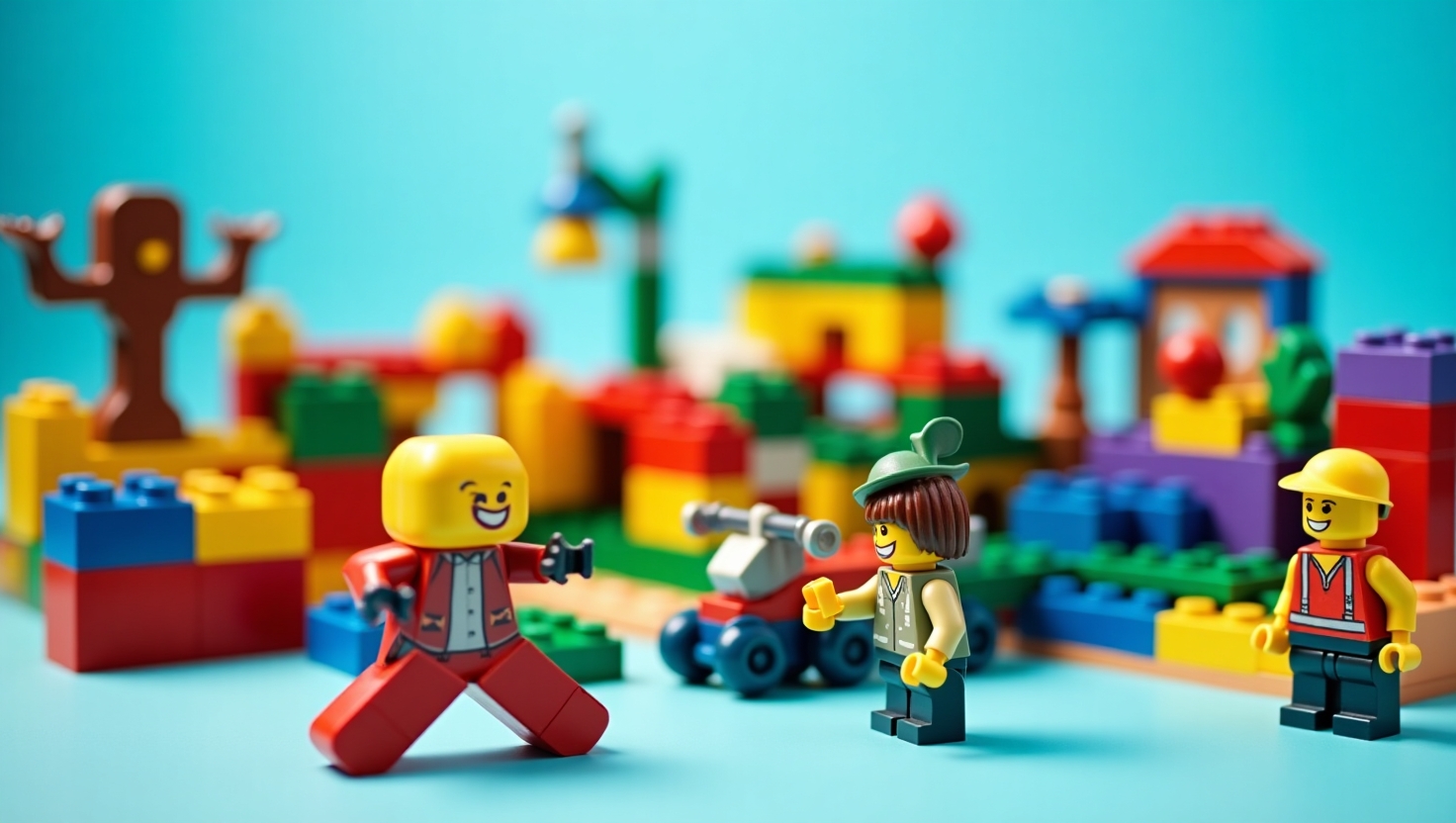Building the Minecraft Movie Magic: The Ultimate LEGO Recreation of Game Over World
Introduction: Where Minecraft Meets LEGO Masterpiece
Remember the thrill of stepping into a dimly lit arcade, the glow of pixelated screens casting shadows on worn-out joysticks? That same wave of nostalgia now washes over us as LEGO and Minecraft collide in a breathtaking tribute to cinematic gaming culture. Swedish LEGO enthusiast Jenny Bergensten, a dedicated member of the Swebrick community, has achieved what many thought impossible—she spent her summer meticulously recreating Game Over World from the Minecraft Movie entirely in LEGO bricks. This isn’t just another building project; it’s a bridge between digital storytelling and tangible creativity, where film locations transform into minifigure-scale realities. As we explore this extraordinary Minecraft Movie LEGO recreation, we’ll uncover how Bergensten captured the soul of Jason Momoa’s character’s sanctuary and what this means for builders dreaming beyond official sets. Prepare to journey through faded neon signs, custom printed treasures, and the very essence of why we preserve memories in plastic bricks.
Background: The Minecraft Movie’s Gaming Sanctuary
At the heart of the Minecraft Movie lies Game Over World—a retro gaming shop that serves as both sanctuary and narrative anchor. Run by Jason Momoa’s character Garret ‘The Garbage Man’, this establishment embodies the film’s celebration of gaming history, filled with relics from gaming’s golden era. The shop’s worn-out facade and cluttered interior tell stories beyond the screenplay, representing a haven where characters connect through shared nostalgia. Translating such a richly detailed cinematic space into LEGO form presented unique challenges—how does one capture the warmth of flickering arcade screens or the texture of decades-old posters using standardized bricks? The answer lies in pushing LEGO’s boundaries, much like how classic games pushed technical limits with limited resources. This retro gaming shop LEGO interpretation required not just building skills but a deep understanding of the film’s emotional core, where every dust-covered console and faded marquee contributes to the story.
Trend: The Rise of Film Location LEGO Recreations
The LEGO community has witnessed a fascinating shift toward recreating iconic film locations, moving beyond standard castles and spaceships into meticulously detailed cinematic landscapes. Communities like Swebrick have pioneered this movement, demonstrating how custom printed LEGO bricks can achieve previously impossible levels of accuracy. Imagine trying to build the Parisian café from Amélie using only standard LEGO elements—you’d capture the shape but miss the specific French bakery signage that makes it authentic. Similarly, Bergensten’s project relied on specialized printing to recreate Game Over World’s distinctive features. This trend reflects a growing desire among adult builders to preserve cinematic memories in physical form, with arcade LEGO displays becoming particularly popular. Unlike traditional modulars that imagine new worlds, these recreations honor existing ones, satisfying our collective yearning to hold pieces of our favorite stories in our hands.
Insight: Behind the Bricks – Bergensten’s Building Process
Jenny Bergensten approached Game Over World with the reverence of an archaeologist preserving ancient artifacts. Her process began with studying every frame of the Minecraft Movie, noting how light fell across aging arcade cabinets and how Garret’s personality manifested in the shop’s organized chaos. The exterior required clever part usage to mimic weathered brickwork, while the interior became a masterclass in density—every shelf and countertop crammed with custom printed LEGO bricks representing 80s gaming relics. Commissioning printed elements like the Hunk City Rampage logo was crucial for authenticity, transforming generic minifigure-scale spaces into recognizable film scenes. As one source notes, \”Jenny packs the shop interior with gaming memorabilia and glorious relics of 80s gaming\” (Brothers Brick, 2025). The minifigure representation of Jason Momoa’s character serves as the heart of the display, perfectly scaled to interact with his environment. Bergensten’s work demonstrates that the magic of LEGO isn’t just in following instructions, but in improvising solutions that capture intangible qualities like nostalgia and character.
Forecast: The Future of Arcade LEGO Displays and Custom Creations
Bergensten’s Game Over World project signals a bright future for specialized LEGO creations. We predict a surge in Game Over World modular-inspired builds as builders recognize the emotional resonance of preserving gaming history. The market for custom printed LEGO bricks will expand dramatically, enabling even more detailed recreations of film locations and historical spaces. Official LEGO sets might follow this lead, potentially releasing licensed arcade LEGO displays that appeal to both gaming and film fans. The success of this Jason Momoa LEGO build could inspire similar projects based on other iconic film locations, from Star Wars cantinas to Harry Potter shops. Communities like Swebrick will continue driving innovation, challenging what’s possible with LEGO beyond corporate design constraints. As one builder envisions, \”As much as I love the timeless charm of LEGO’s modulars, I would love to see the company try a larger Arcade set\” (Brothers Brick, 2025). The line between official products and fan creations will blur, resulting in richer building experiences for everyone.
Summary: LEGO’s Enduring Power to Capture Cinematic Magic
Jenny Bergensten’s Minecraft Movie LEGO recreation stands as a testament to LEGO’s timeless ability to bridge worlds—between digital and physical, film and hobby, memory and creation. Her faithful minifigure-scale interpretation of Game Over World goes beyond mere imitation, capturing the soul of Jason Momoa’s character domain and the nostalgia it represents. This project reminds us that LEGO isn’t just a toy but a medium for storytelling, capable of preserving cinematic magic long after credits roll. As custom printing technology advances and communities grow more ambitious, we’ll see even more elaborate recreations of beloved film locations. The future holds incredible potential for LEGO and film collaborations that honor both building creativity and cinematic artistry. Let Bergensten’s work inspire your own projects—whether recreating movie scenes or imagining new ones, remember that every brick can hold a story waiting to be built.

